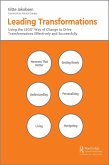Organizations that attempt an Agile transformation abandon it either because it was too difficult or because it did not deliver the hoped-for results. At the same time, efforts to improve the design and experience of their products using Human-Centered Design have a tendency to fall short because it can be difficult to see the ROI of design efforts, even while companies like McKinsey document design-driven successes. What's more, a company that successfully adopts Agile often seems to have an even harder time implementing HCD and vice versa. This is particularly disappointing since Agile and HCD should be mutually supportive.
In practice, Agile teams often bypass HCD efforts in favor of finishing their goals and thinking they are doing well, only to have their work product fail to meet the actual end user's needs. At first the team will become indignant. "We followed the expert guidance of our Product Owner, the 'Voice of the Customer,'" they will say, followed by "but... it met all of the Acceptance Criteria, they should love it." It's a failure of Agile that this type of sub-optimal delivery happens so regularly and predictably. The fact that team responses can be so accurately predicted in advance (by those who've seen this movie many times before) point to a process failure or inefficiency that is widespread and desperately needs to be addressed.
Alternatively, teams will invest too heavily in up-front discovery efforts that slow down delivery to an unacceptable point, often while also failing to capture research-based findings in a way that matures the overall strategic product or portfolio understanding.
The cost of misfiring goes far beyond a bad delivery or an angry customer. Decreased team morale drives poorer future performance (cost), turnover if left unchecked (more cost), and non-productive blame sessions that lead to degraded faith in the Agile product development model itself.
This book identifies solutions based on successful methods of integrating HCD practices by phase into an ongoing agile delivery model, from the discovery through implementation and evaluation, including:
- key success factors for an HCD/Agile engagement approach,
- critical points of delivery, and
- strategies for integrating HCD into teams based on the existing design maturity of an organization or product team.
Dieser Download kann aus rechtlichen Gründen nur mit Rechnungsadresse in A, B, BG, CY, CZ, D, DK, EW, E, FIN, F, GR, HR, H, IRL, I, LT, L, LR, M, NL, PL, P, R, S, SLO, SK ausgeliefert werden.
Human-Centered Agile (HCA) is a must have competitive necessity for delivering a powerful organizational impact. It is a new way of working and thinking that creates a successful competitive response to an ever more insane marketplace, making mastery of product and delivery an existential determinant. Thus, HCA should not be treated as an HCD "bolt-on" accessory for the Agile process.
The existential reality of today's marketplace competition means only organizations that quickly deliver the "correct" solution will survive, much less thrive. That requires building "something" and obtaining user feedback, which Agile methods provide. The genius of Human-Centered Agile is that it provides a toolkit to improve that "something" from the very first iteration! Human-Centered Agile simultaneously and continuously accelerates the integration of learning into product development, thereby delivering better products faster and, ultimately, unleashing enterprise-wide agility... and the ability to thrive!
-- John G. Stenbeck, PMP, CDAI, CSP, Three-time Amazon #1 Best Selling Author, Enterprise Agility Expert









